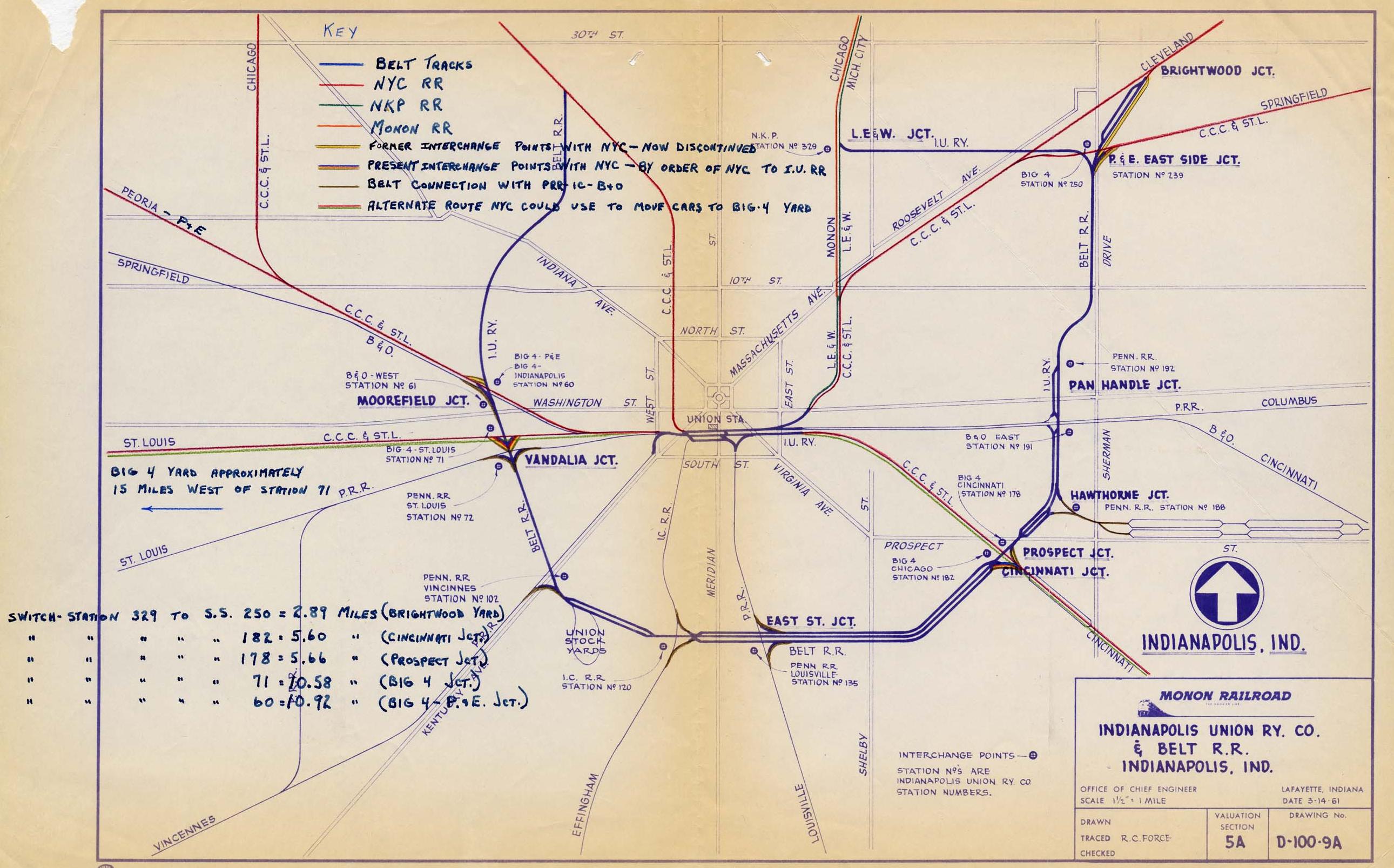Completed in 1878, the Belt Line Railroad over many decades has served as a supplemental track facility for other railroads providing freight service to Indianapolis. Most of its 14-mile trackage resembles a large, partially closed letter “U” surrounding the inner city of Indianapolis on the northeast, the east, the south, and the west. is near the bottom of the “U.”

Since its construction, the Belt Line has had multiple purposes. One was to prevent congestion on the city’s downtown streets, which would likely result from many independent rail lines converging on Union Station. Another purpose, not fulfilled, was to avoid the piling up of freight at Union Station by establishing a series of freight depots on the “belt.” Still another purpose was to provide convenient, inexpensive rail service that would promote industrial development in Indianapolis. The large and meatpacking industries located for almost a century on the southwest side of the city are prime examples of how this purpose was carried out.
Whether the Belt Line in Indianapolis was actually the first such facility in the United States may be debatable, but certainly, it was among the first built upon such a grand scale. Although the idea goes back at least to 1849 when broached it, serious planning did not begin until the economically troubled 1870s. The state of Indiana granted a charter to the Indianapolis Belt Railroad Company in 1873, but the financial panic later that year halted construction.

, a local meatpacker, attempted construction a short time later but failed, as did another effort in 1876. A year later Indianapolis Mayor guided still another effort that led to the completion of the line. Caven portrayed the proposed facility metaphorically as a large “navigable water” surrounding Indianapolis “into which poured eleven navigable rivers, navigable to every county in the state and to every state in the Union.”
A major portion of the original construction cost was defrayed by a $500,000 issue of Indianapolis city bonds ($15 million equivalent in 2020), later repaid in full. As foreseen by Caven, the 11 rail lines (and others later) made extensive use of the “belt.” By 1910, it was handling over a million freight cars a year. In 1920, it brought its company a net income of $250,000 and paid 11 percent dividends on its common stock.
The Belt Line has gone through many changes over the years. It has been known as the Union Railway Company; Union Railroad Transfer and Stock Yard Company; Belt Railroad and Stock Yards; Indianapolis Belt Railroad and Stock Yard Company; and finally the Indianapolis Stock Yards Company, Inc. in 1964. The entity retained two of its historic functions–per a longstanding lease agreement of its rail facility to the Union Railway Company a shared track led to Union Station, and the city’s southwest side remained home to its comprehensive stockyards-meatpacking operations.
With the departure of the latter, along with a general diminishing of rail freight business within the city, activity on Belt Line decreased. In 1976, the Belt Line came under the control of the Consolidated Rail Corporation (Conrail), but other railroad companies continued to use its tracks for entry into the Union Station complex and for switching purposes. In July 1998, CSX took control of the remaining trackage of the Belt Line and still operates some of the Belt Railroad.
CITE THIS ENTRY
APA:
Bogle, V. M. (2021). Belt Line Railroad. Encyclopedia of Indianapolis. Retrieved Jan 5, 2026, from https://indyencyclopedia.org/belt-line-railroad/.
MLA:
Bogle, Victor M. “Belt Line Railroad.” Encyclopedia of Indianapolis, 2021, https://indyencyclopedia.org/belt-line-railroad/. Accessed 5 Jan 2026.
Chicago:
Bogle, Victor M. “Belt Line Railroad.” Encyclopedia of Indianapolis, 2021. Accessed Jan 5, 2026. https://indyencyclopedia.org/belt-line-railroad/.

Help improve this entry
Contribute information, offer corrections, suggest images.
You can also recommend new entries related to this topic.